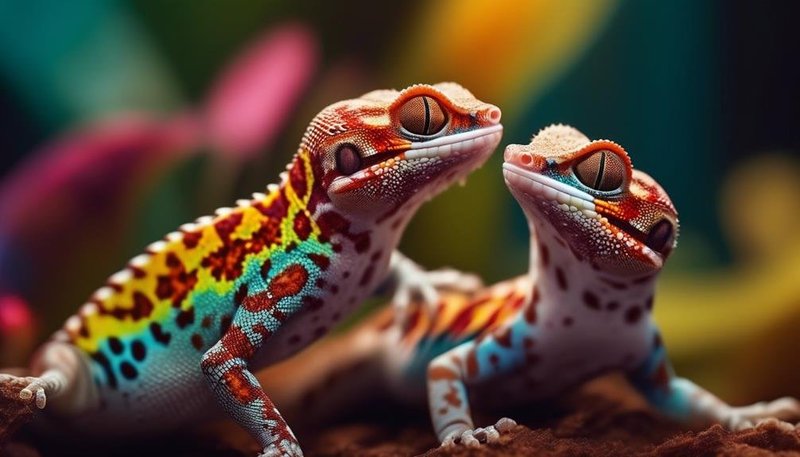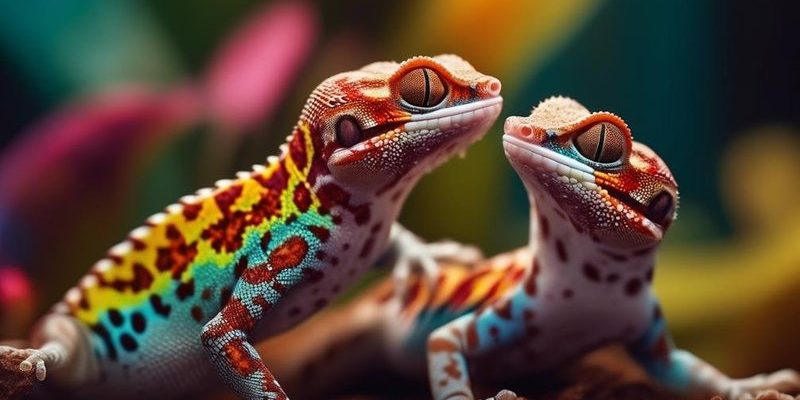
Crested geckos, native to New Caledonia, are not just eye-catching pets; they also display unique reproductive behaviors that can be intriguing to observe. If you’re considering breeding these delightful reptiles, it’s important to understand their mating rituals, egg-laying patterns, and care for hatchlings. Let’s dive deep and explore the intimate world of crested gecko breeding, so you can make informed decisions as a responsible keeper.
Understanding Crested Gecko Mating Behavior
Crested geckos have some pretty interesting courtship rituals. The male gecko typically starts to get ready for breeding by displaying vibrant colors and engaging in a series of head-bobs and vocalizations, which you might find amusing. They may even chase the female around their enclosure, showing off their agility and speed. It’s like a little dance—each move designed to impress and woo.
When a female is receptive, she’ll often signal her interest by staying still or responding to the male’s advances. This part is crucial because if she’s not in the mood, she may react by biting or running away. Here’s the thing: this initial interaction sets the stage for successful mating. Understanding these signals is vital for anyone thinking about breeding crested geckos.
It’s also worth noting that these geckos are generally monogamous during their breeding seasons, forming a strong bond with a mate. This commitment means they’ll often stay together until the female lays her eggs. So, if you’re planning to breed them, keeping a pair for a while can lead to successful offspring.
Egg Laying in Crested Geckos
After a successful mating, the female crested gecko will lay eggs, usually two at a time. This process typically takes place at night, which is common for many reptiles. You might not even notice it happening! The eggs are about the size of a grape and have a soft, leathery shell.
The female usually lays her eggs in a secure hide, so providing plenty of options like moss or soft substrate is key. If you’re getting into breeding, you might want to set up a dedicated laying area. It’s like giving her a cozy bedroom to make sure she feels safe and comfortable.
Once the eggs are laid, they need time to incubate. The ideal temperature range for incubation is between 70°F to 80°F. During this period, you’ll want to keep a close eye on the humidity levels too, ideally around 70-80%. If you get it right, you’ll be rewarded with little hatchlings in about 60-90 days!
Incubation and Care for Hatchlings
When those baby crested geckos finally make their entrance into the world, it’s exciting! They’ll be tiny versions of their parents and usually will not need much help from you as they are quite independent. However, a few things are critical to ensure they thrive.
First, you want to set up a separate enclosure for the hatchlings. A smaller tank with plenty of hiding spots is ideal. Keep the temperature stable, around 75°F to 85°F, and monitor humidity levels to keep them comfortable. They’re also voracious eaters, so providing small insects and fruit purees will give them the nutrients they need to grow strong.
One thing to keep in mind is that hatchlings can be shy and may need time to adjust to their new environment. So, avoid handling them too much initially. This period of adjustment is important for their well-being.
Common Breeding Challenges
While breeding crested geckos can be a rewarding experience, it’s not without its challenges. One common issue is infertility, where eggs may not develop or fail to hatch. This can be frustrating, especially for first-time breeders. Sometimes it’s due to improper temperature or humidity during incubation.
Another problem might be aggression between the breeding pair. If the male is overly dominant or if the female is not receptive, it can lead to stress or injuries. This is why monitoring their interactions is crucial. If you notice signs of aggression, it’s best to separate them until the next breeding season.
Finally, you might be wondering about how to ensure the health of the hatchlings. A balanced diet and proper living conditions are essential, but you should also watch for any signs of illness, which can happen if they’re stressed or not fed correctly.
The Importance of Responsible Breeding
Breeding crested geckos isn’t just about creating new pets; it comes with the responsibility of ensuring their well-being. This means understanding their genetics and not just breeding any two geckos together. Responsible breeding practices can help reduce health issues in the offspring and contribute to healthier populations.
Additionally, consider the long-term commitment you’re making by breeding these lovely reptiles. Hatchlings will need homes, and finding good owners who understand how to care for them is essential. This means being prepared to educate potential owners about the needs of crested geckos.
In the end, breeding crested geckos can be a fulfilling journey. It fosters a deeper appreciation for these unique animals and a commitment to their care.
Breeding crested geckos provides a fascinating glimpse into their reproductive behaviors and needs. From their charming courtship rituals to the careful nurturing of hatchlings, there’s a lot to learn and enjoy along the way. If you take the time to understand and prepare for the responsibilities involved, you’ll foster a healthy breeding environment and ensure the continued success of this wonderful species.
Remember, it’s not just about the thrill of breeding; it’s about making sure each gecko, hatchling or otherwise, has the best chance at a happy and healthy life. So, whether you’re just starting out or have some experience under your belt, embrace the journey with an open heart and dedicated care. Happy breeding!

